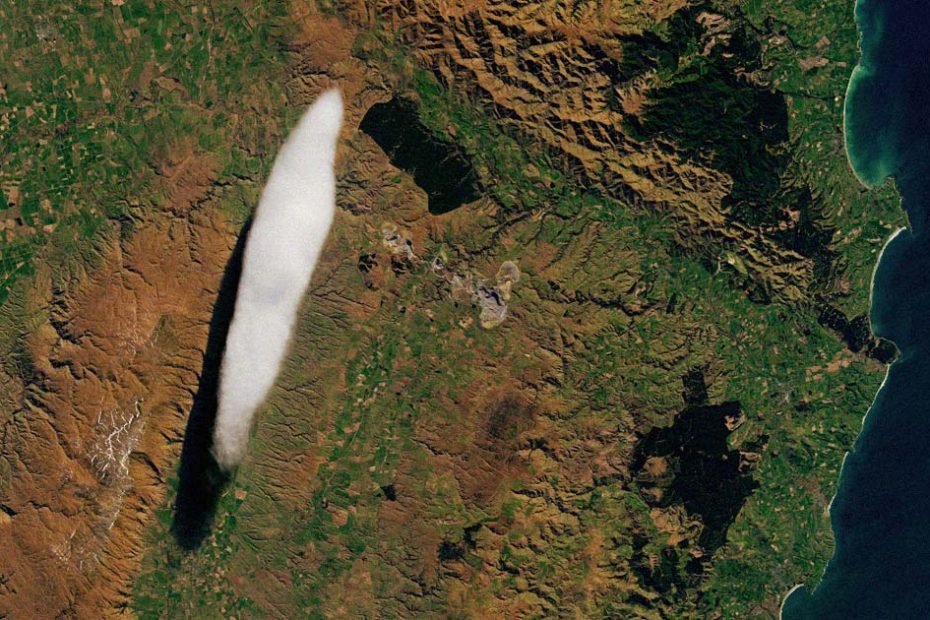Pet names
A NASA observation satellite has imaged an oddly shaped cloud hovering over the Strath-Taieri region of southeastern New Zealand.
A satellite image shared by the space agency and taken on September 7 shows an unusual, elongated cloud nestled along a rocky mountain range. The strange-looking cloud formation often appears in the same spot, leading locals to call it the 'Taieri Pet'.
Although it sounds like alien science fiction, there's a perfectly reasonable explanation: the unusual cloud, according to NASA, is an altocumulus standing lenticular cloud (ASLC), which forms when wind encounters a steep barrier, such as a mountain range. The wind is blown in, creating a standing wave, while the air at the top of the wave cools enough to form water vapor, which condenses into clouds.
“As the cloud forms at the crest of this wave, it remains virtually stationary in the sky and is formed by the strong winds blowing through it,” New Zealand MetService meteorologist John Law explained in a NASA statement .
Blowing clouds
Other ASLC clouds can take on even more unusual shapes, appearing as a pile of stacked disk shapes or narrow bowls reaching high into the sky.
Even the Taieri Pet, when viewed from the side, looks like stacked layers of clouds reaching hundreds of feet into the sky, giving it an even more UFO-like appearance.
“The unique thing about these clouds is that they are very dynamic, and even though each individual air parcel undergoes this cycle of cooling and condensation, warming and evaporation, the cloud visually appears to be standing still,” explains weather observer Karl Philippoff. a blog post for the Mount Washington Observatory.
With its extremely sharp edges, the Taieri Pet is actually the result of some extremely strong environmental forces.
“The appearance of the Taieri Pet is a good indicator of strong winds high in the atmosphere,” explains Law.
Unsurprisingly, flying near the cloud can be dangerous and lead to severe turbulence, NASA said.
More about clouds: Oops! Geoengineering trick to cool brutal heat could raise temperatures elsewhere, scientists say

